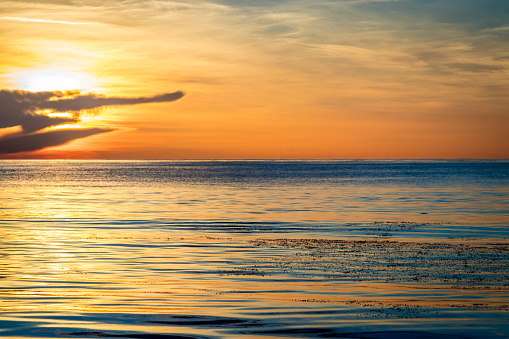A vast region of the southwestern Atlantic Ocean called the Sargasso Sea has become a huge and growing garbage dump, most of it plastics that threaten both acquatic and human life, reports CNN.
“The Sargasso Sea takes its name from sargassum, a free-floating golden brown seaweed that is a haven for hatchling sea turtles and hundreds of other marine species who use it to feed, grow and hide from predators,” writes CNN reporter Arwa Damon, who visited the region for the network’s exclusive report.
“Caught up in the swirling gyre [of ocean currents] is a growing collection of human waste: trash from countries that border the Atlantic, from the west coast of Africa to the east coast of the U.S., slowly breaking up … into microplastics that end up in the gills and stomachs of aquatic animals.”
Damon and her cameraman acccompanied a Greenpeace expedition to the Sargasso.
“My cameraman, Brice Laine, and I thought we had an understanding of how humanity’s reliance on plastic has impacted Earth,” Damon writes. They have reported “from the remotest regions of our planet,” she says, from the Arctic and Antarctic to “the notorious Great Pacific Garbage Patch” — and finding plastics and other human trash everywhere.
The Sargasso was no different: embedded in the floating seaweed were “shampoo bottles, fishing gear, thick hard containers or thin soft bags amongst many other types of plastic.”
“But what is really jarring,” Damon writes, “is when you dive down and look into the blue and realize you are surrounded by tiny glittering pieces of broken up plastic called microplastic.
“It wasn’t until witnessing it that the extent of plastic pollution and what it means sank in. And it’s terrifying.”
Damon reports that only about 9% of plastic ever produced has been recycled, with most of the rest dumped in landfills or burned in “huge toxic firest.”
But some reaches the sea — where it enters the food chain, and eventually reaches all the way to the top: us.
“The fish and shrimps eat the plastic, we are eating them or the fish that eat them, and this will end up in our bodies somehow,” marine biologist Celia Ojeda told Damon, who cites a recent, not-yet-published by the Bermuda Aquarium Museum that found microplastics in the guts of nearly 42% of fish it sampled. The island of Bermuda lies on the western fringe of the Sargasso.
There’s no quick or easy solution, but Ojeda says one thing must happen, and soon: quit single-use plastics completely. Phasing them out is not enough.
“For the oceans to recover to we need to stop them now … stop single-use plastic. Then the seas will have time to clean up.”
For more, including videos, go here.



